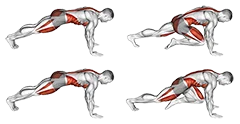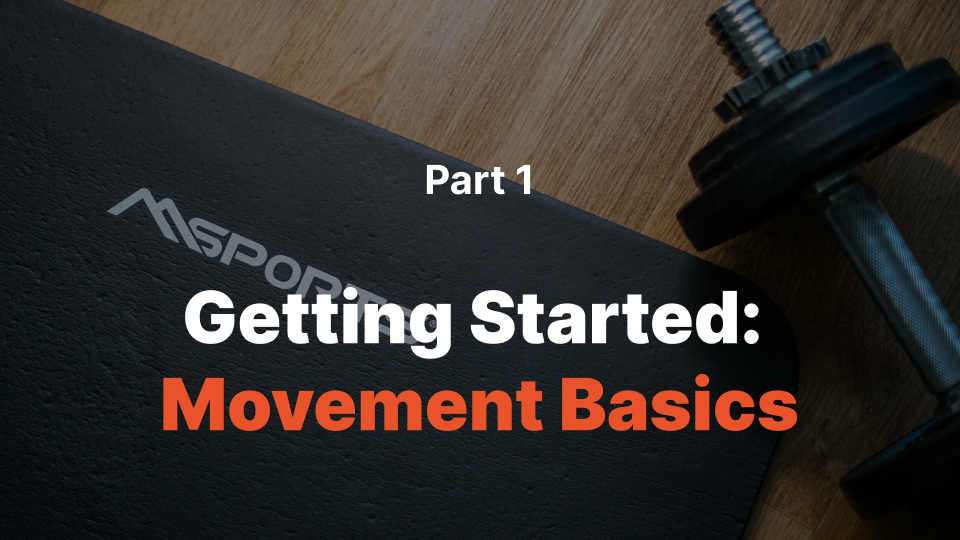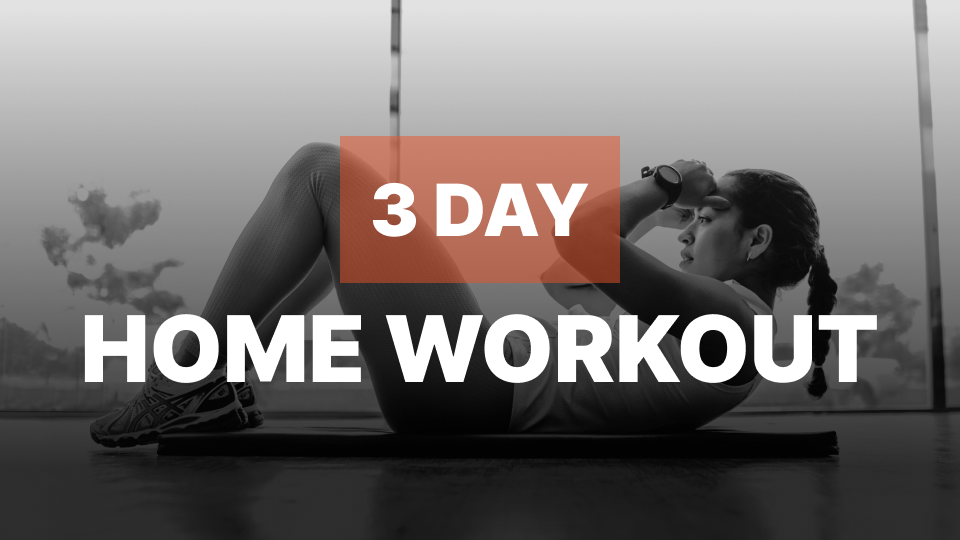Introduction
The "Mountain Climber" exercise is a dynamic full-body movement that simulates climbing a mountain using only your body weight. It primarily targets the core, chest, shoulders, and legs, improving both strength and cardiovascular fitness. Its effectiveness lies in its ability to engage multiple muscle groups simultaneously while maintaining a high heart rate, making it an efficient exercise for total-body conditioning, particularly for individuals focusing on functional fitness or calorie burning.
Muscles Worked
- Primary: Abdominals (Rectus abdominis, Obliques)
- Secondary: Shoulders (Deltoids), Chest (Pectoralis major), Back (Erector spinae), Wrist and Finger Flexors, Hips (Adductors)
How to Do It (Step-by-Step)
- Start in a high plank position with your hands shoulder-width apart and your body forming a straight line from head to heels.
- Alternate quickly bringing one knee up to the same side elbow and then returning it to the starting position while keeping the other foot on the ground. Repeat this movement on the opposite side.
- Keep your core engaged, back flat, and maintain a steady rhythm throughout the exercise. Maintain a tight plank position without letting your hips dip or sway.
Tip: Breathe steadily and control your movements to maximize effectiveness and prevent injury.
Rep & Rest Guidelines
- Strength: 4–6 reps, 2–3 min rest
- Hypertrophy: 8–12 reps, 60–90 sec rest
- Endurance: 12–20 reps, 30–60 sec rest
For seamless progression of your workouts, consider using Auto Progression and ensure optimal rest times with the help of a built-in Rest Timer.
Form Tips
- Maintain a strong and stable core by engaging your abdominal muscles. This will help you balance and prevent excessive movement during the exercise.
- Keep your back flat and avoid arching or rounding it. A neutral spine position is essential to minimize the risk of injury.
- Ensure smooth and controlled movements for each step. Avoid jerky or rushed motions, focusing on proper form and technique instead.
When to Use It
- High-Intensity Interval Training (HIIT) for improving cardiovascular endurance and core strength.
- Functional Fitness circuits targeting full-body conditioning and agility.
- Plyometric exercises in plyobox training for dynamic leg movements and explosive power.
- To track your workout history, check it out here
Mountain climber primarily works the shoulders, core, and legs.
Mountain climber is considered both a cardiovascular and a strength exercise.
Aim for 3 sets of 12-15 repetitions per set for best results.
Maintain a plank position, alternately bringing each knee towards the opposite elbow without letting your hips sag or raise.
Adding weight can increase resistance and challenge your strength, but ensure proper form is maintained to avoid injury.



